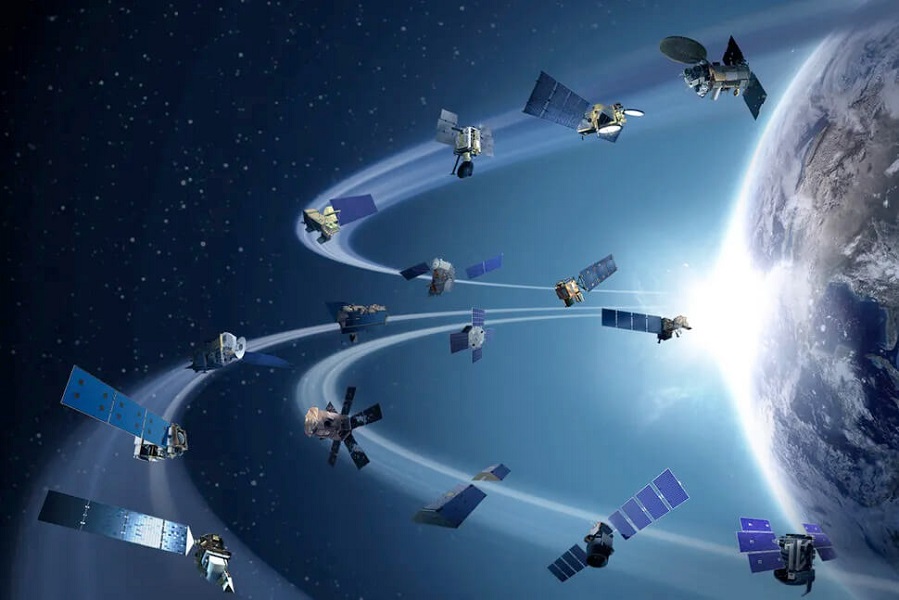From checking Google Maps for directions to watching live sports broadcasts, satellites are quietly powering much of our digital world. In fact, satellite technology has become the backbone of communication, navigation, weather forecasting, defense, and global internet access.
Thanks to rapid advancements in space science and technology, satellites are getting smaller, smarter, and more affordable. Today, private companies and governments are launching satellites at an unprecedented pace to meet the demands of our connected society.
In this blog, we’ll explore how satellite technology works, its applications, emerging innovations, and its impact on the global economy.
The Importance of Satellite Technology
Satellites are not just space gadgets; they are essential to modern life.
- Communication: Provides internet, phone, and TV signals worldwide.
- Navigation: GPS enables accurate location tracking for transport and logistics.
- Weather Forecasting: Helps predict storms, floods, and climate changes.
- Security & Defense: Monitors borders and global threats.
- Scientific Research: Studies Earth’s environment and outer space.
Without satellites, the modern digital economy would collapse.
Types of Satellites and Their Functions
Communication Satellites
- Used for TV broadcasting, mobile networks, and internet services.
- Example: Starlink by SpaceX aims to provide global high-speed internet via thousands of small satellites.
Navigation Satellites
- Systems like GPS (USA), Galileo (EU), and BeiDou (China) enable global navigation.
- Critical for aviation, shipping, and everyday smartphone use.
Weather and Climate Satellites
- Monitor hurricanes, floods, wildfires, and climate changes.
- Provide real-time disaster warnings, saving millions of lives.
Earth Observation Satellites
- Used for mapping, agriculture, and resource management.
- Farmers use satellite data to optimize crop yield.
- Governments use them to monitor deforestation and urban growth.
Military and Defense Satellites
- Track enemy movements.
- Provide encrypted communications.
- Ensure national security.
Technology Behind Satellites
Miniaturization of Satellites
- CubeSats and nanosatellites have reduced the cost of space missions.
- Universities and startups now build satellites for under a million dollars.
AI and Machine Learning in Satellites
- Smart satellites analyze data in orbit before sending it to Earth.
- Helps reduce data overload and improve decision-making.
Reusable Rocket Launches
- Companies like SpaceX and Rocket Lab have cut launch costs.
- More affordable launches = more satellites in orbit.
Satellite Constellations
- Networks of hundreds or thousands of satellites working together.
- Example: Starlink and OneWeb aim to deliver internet even in remote areas.
Impact of Satellite Technology on Daily Life
H2: Internet and Digital Connectivity
- Rural and remote areas now have internet thanks to satellite broadband.
- Satellites are closing the digital divide worldwide.
H2: Transportation and Navigation
- Ride-sharing apps, aviation, shipping, and trucking all rely on satellite-based GPS.
- Autonomous vehicles use satellite navigation for precision.
H2: Disaster Management
- Satellites provide early warnings for earthquakes, tsunamis, and wildfires.
- Rescue teams use satellite data to plan relief operations.
H2: Global Business and Economy
- Banks, stock markets, and international trade depend on satellite-based timing signals.
- Agriculture and energy sectors use satellite data to improve efficiency.
Challenges in Satellite Technology
- Space Debris: Thousands of defunct satellites and debris threaten active ones.
- Cybersecurity Risks: Satellites are vulnerable to hacking.
- High Costs: Despite reusable rockets, advanced satellites remain expensive.
- Regulatory Issues: Competition between countries and private companies creates legal challenges.
Future of Satellite Technology
H2: Space Internet Everywhere
- Starlink, Amazon’s Project Kuiper, and OneWeb aim to connect every corner of Earth with high-speed internet.
H2: Smart Earth Monitoring
- AI-powered satellites will detect environmental changes instantly.
- Useful for climate change solutions and disaster response.
H2: Space-Based Solar Power
- Future satellites may collect solar energy in space and beam it back to Earth.
- Could solve the global energy crisis.
H2: Satellites Supporting Space Colonization
- Future Mars and Moon colonies will rely on satellite communication and navigation systems.
Satellite technology has become the invisible thread connecting our modern world. From internet access to disaster response and global navigation, satellites are redefining how we live and work.
As technology advances, we are entering a new era of satellite constellations, AI-driven intelligence, and space-based solutions. The future promises a world where satellites not only connect Earth but also enable humanity to expand beyond it.
FAQs
Q1. How do satellites impact daily life?
Satellites provide GPS navigation, communication, internet, and weather updates, which are essential in modern life.
Q2. What is Starlink?
Starlink is a satellite internet constellation developed by SpaceX to deliver high-speed internet worldwide.
Q3. How many satellites are currently in orbit?
As of 2025, there are over 9,000 active satellites, with more being launched every month.
Q4. What are CubeSats?
CubeSats are small, low-cost satellites used for education, research, and small-scale commercial applications.
Q5. What challenges does satellite technology face?
Major challenges include space debris, cybersecurity risks, and international regulation.

